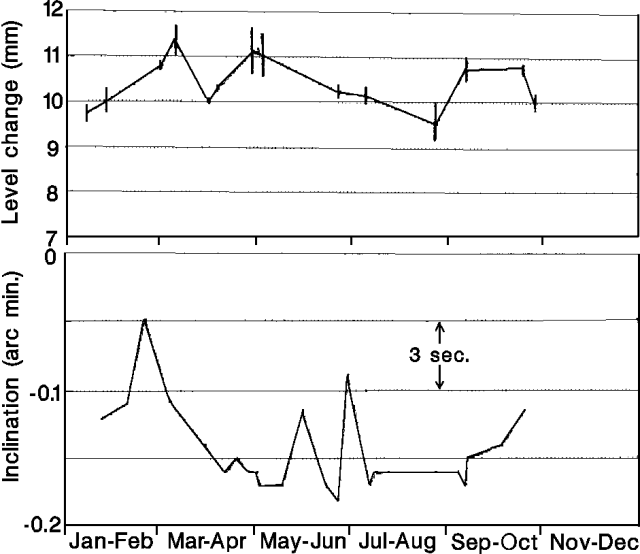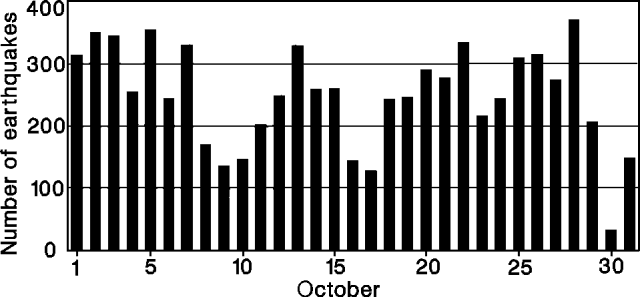Report on Poas (Costa Rica) — October 1990
Bulletin of the Global Volcanism Network, vol. 15, no. 10 (October 1990)
Managing Editor: Lindsay McClelland.
Poas (Costa Rica) Fumarolic activity and seismicity continue; minor inflation
Please cite this report as:
Global Volcanism Program, 1990. Report on Poas (Costa Rica) (McClelland, L., ed.). Bulletin of the Global Volcanism Network, 15:10. Smithsonian Institution. https://doi.org/10.5479/si.GVP.BGVN199010-345040
Poas
Costa Rica
10.2°N, 84.233°W; summit elev. 2697 m
All times are local (unless otherwise noted)
Vigorous fumarolic activity continued during October. The crater lake level, which had been dropping during August and September, rose 2 m due to heavy rainfall, but began to fall again at the end of the month. Fumarolic activity within the lake remained similar to previous months; in the SE part of the lake, a small pool of sulfur remained visible. Temperatures of up to 80°C were recorded in the crater lake, 17°C in the peripheral cold water springs, and 91°C from the 1953-55 dome fumaroles. On 13 September, rain water had a pH of 2.7 at the dome and 3.2 at the crater rim.
Daily averages of 250 low-frequency earthquakes (<2.5 Hz) were recorded, similar to levels in May. A maximum of 373 events was recorded 28 October (figure 34). High-frequency earthquakes were rare. Only three were locatable (M 2.2-2.6), the largest felt by local residents. Short tremor episodes (<6 hour durations), less frequent than in August and September, were also occasionally recorded.
Periodic S radial inflation was measured in 1990 through early November (figure 35); the general trend was one of minor inflation relative to the 1989 baseline. Inflation in April-May coincided with eruptions of sediment from the bottom of the lake. Deformation measurements by EDM (1 km S of the crater) registered several different inflationary peaks that geologists believed were influenced by local disturbances such as subsoil water or changes in temperature.
 |
Figure 35. Dry tilt (top) and electronic tilt (bottom) measurements at Poás, January-October 1990. Courtesy of the Univ Nacional. |
Geological Summary. The broad vegetated edifice of Poás, one of the most active volcanoes of Costa Rica, contains three craters along a N-S line. The frequently visited multi-hued summit crater lakes of the basaltic-to-dacitic volcano are easily accessible by vehicle from the nearby capital city of San José. A N-S-trending fissure cutting the complex stratovolcano extends to the lower N flank, where it has produced the Congo stratovolcano and several lake-filled maars. The southernmost of the two summit crater lakes, Botos, last erupted about 7,500 years ago. The more prominent geothermally heated northern lake, Laguna Caliente, is one of the world's most acidic natural lakes, with a pH of near zero. It has been the site of frequent phreatic and phreatomagmatic eruptions since an eruption was reported in 1828. Eruptions often include geyser-like ejections of crater-lake water.
Information Contacts: J. Barquero, V. Barboza, E. Fernández, and R. van der Laat, OVSICORI; G. Soto and R. Barquero, ICE.


